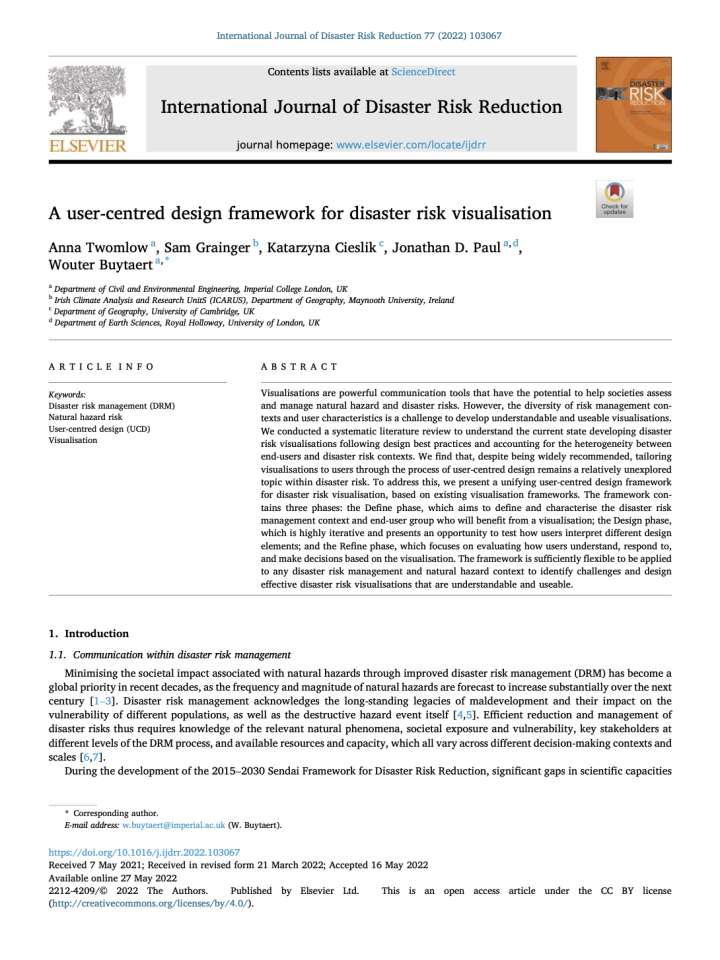A user-centred design framework for disaster risk visualisation
This study presents a unifying user-centred design framework for disaster risk visualisation, based on existing visualisation frameworks. Visualisations are powerful communication tools that have the potential to help societies assess and manage natural hazard and disaster risks. However, the diversity of risk management contexts and user characteristics is a challenge to develop understandable and useable visualisations. The researchers conducted a systematic literature review to understand the current state developing disaster risk visualisations following design best practices and accounting for the heterogeneity between end-users and disaster risk contexts.
The paper finds that, despite being widely recommended, tailoring visualisations to users through the process of user-centred design remains a relatively unexplored topic within disaster risk. To address this, the study presents a unifying user-centred design framework. The framework contains three phases: the Define phase, which aims to define and characterise the disaster risk management context and end-user group who will benefit from a visualisation; the Design phase, which is highly iterative and presents an opportunity to test how users interpret different design elements; and the Refine phase, which focuses on evaluating how users understand, respond to, and make decisions based on the visualisation. The framework is sufficiently flexible to be applied to any disaster risk management and natural hazard context to identify challenges and design effective disaster risk visualisations that are understandable and useable.
Explore further
